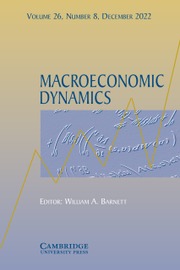No CrossRef data available.
Article contents
Large excess reserves, central bank digital currency, and monetary policy
Published online by Cambridge University Press: 26 September 2024
Abstract
In this paper I examine the effect of introducing an account-based central bank digital currency (CBDC) on liquidity insurance and monetary policy implementation. An asset-exchange model is constructed with idiosyncratic liquidity risk, in which one type of agents require currency and/or CBDC to consume while the other type of agents can use any assets to trade. There arises a liquidity insurance to distribute assets efficiently by type. Since central bank reserve accounts are accessible by the public directly, the large excess reserves (LER) in a floor system can make it difficult to separate the types under private information. Therefore, raising the interest on reserves in the floor system can reduce the aggregate liquidity excessively, and the equilibrium allocation with the LER can be suboptimal.
Keywords
- Type
- Articles
- Information
- Copyright
- © The Author(s), 2024. Published by Cambridge University Press
Footnotes
I thank Gaetano Antinolfi, Costas Azariadis, Joshua Hendrickson, David, Van Hoose, Todd Keister and Stephen Williamson for all their valuable advice and comments. I would also like to thank the seminar participants at the Midwest Macro conference held at Michigan State University, 2022 KER Conference and Yonsei University. I appreciate the editor William Barnett and two anonymous referees for their comments and guidance. All errors are my own. This work was supported by the Soongsil University Research Fund (New Professor Support Research) of 2021.


